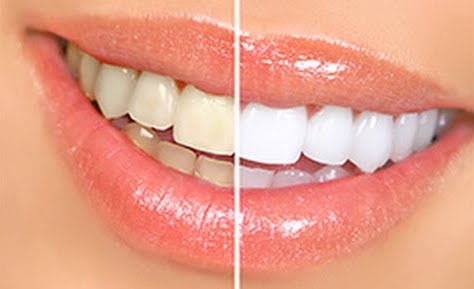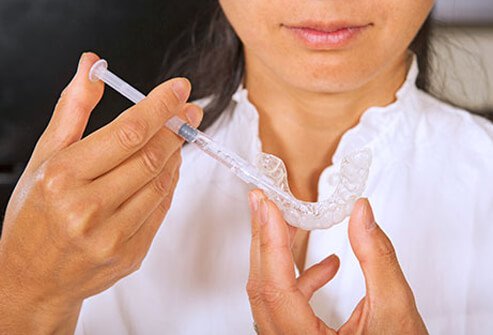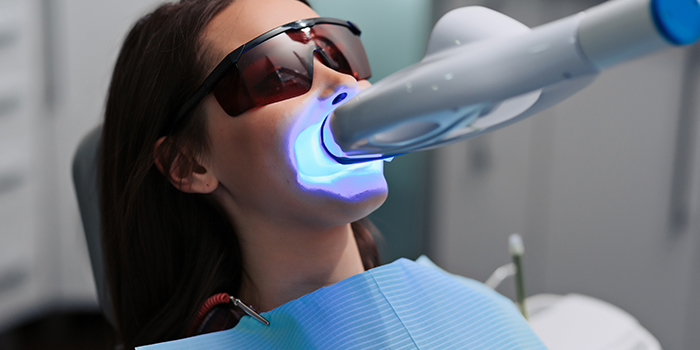-

020 8550 8217

Many people like to whiten their teeth because it gives them a more youthful appearance: dark, discoloured teeth can be very unappealing.
It often makes a tremendous difference to how your mouth looks - many patients feel it makes them look five to ten years younger.
It is also essential to consider tooth whitening whenever you are having a new crown, filling, veneer, denture or inlay for better colour-matching.
Whitening toothpastes can remove some superficial staining from the surface of teeth, but they do not really alter the fundamental shade of the tooth beneath.
If you want to really brighten your teeth, the only effective way to do it is by using a dentist-supervised take-home or led teeth whitening.
Crowns and veneers can also change the appearance of teeth, but they require a quantity of tooth to be removed in the process so aren't the preferred option for a color change.

On the initial consultation, the dentist will assess you are suitable and there are not any problems to address first.
She will then take the impressions (ie a mould) of your teeth and sends these to a specialist dental laboratory, who will make flexible dental trays.
At the next appointment, your dentist will check that the trays are a good fit and will give you the instructions along with the whitening gels.
The trays are usually worn at night while you are asleep between 7 and 20 days for good results.

You will first be booked for an initial consultation with the dentist who will need to assess your are suitable and there are not any problems to address first.
The dentist may advise you to do an hygienist session before the procedure.
Once it has been agreed, a laser whitening session usually takes about one hour.
The light speeds up the reaction of the whitening product and the colour change can be achieved more quickly.
Several whitening sessions may be required, depending on your teeth.